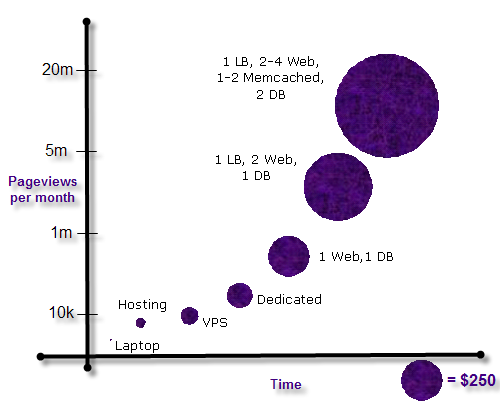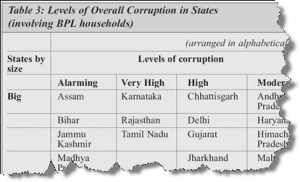Two people get together and start developing a product. You are one of the founders. Few more common friends join. Everybody starts working towards a goal. Six months out, the product is still taking shape; Few people who contributed move-on to other things. This is a usual startup story.
In the above scenario a formal agreement or a compensation is the last thing in everybody’s mind (or like-minded people) when people start working together. Moreover, working together for some time helps people gauge the ‘mutual fit’ before signing each other up for 4-5 years. It is quite possible that after sometime a few members of the team decide to mutually part way and move-on. The question pops — what/how much would be the compensation if things do not move forward into a formal agreement? How much should be the compensation for the person who has worked his ass off but now thinks that he needs to move on?
Moreover, working together for some time helps people gauge the ‘mutual fit’ before signing each other up for 4-5 years. It is quite possible that after sometime a few members of the team decide to mutually part way and move-on. The question pops — what/how much would be the compensation if things do not move forward into a formal agreement? How much should be the compensation for the person who has worked his ass off but now thinks that he needs to move on?
People leave because of several reasons; personal, financial, etc. 100% possible that they come back a year later when they have sorted things out.
You as a founder of the company need to worry about people joining your startup — at the same time you also need to think through of compensating people who came trusting you for shorter stints. You have to decide this upfront when the person starts working using a simple math.
No Remorse Compensation is a way of rewarding people (esp. friends) who plan to contribute in building your startup but may move on later to do something else. To keep things simple you agree on a compensation before writing things on stone say 6 months later. Here’s a simple math:
1. 2 people team, started, now looking for a seasoned techie to manage the codebase and developers while the two of you do sales/marketing/product as well.
2. The 2 founders decide that the techie would get 10% of the equity (and some salary, if any, but for now, none) — however, the techie says “lets work together before making a decision.” You don’t want to leave things hanging without making any decision on that. Assume that the techie would work 4 years (48 months). So the techie would “earn” 10% / 48 = 0.2% equity every month.
3. Most probably you are not paying any salary to him — so add 25% – 50% more equity. So the number becomes 0.3%. Assuming you have 1,000,000 shares outstanding, that becomes 3,000 shares every month.
4. The techie earns 3,000 per month until you come with a formal agreement which maybe in line with the 10% equity or maybe less. Make sure to arrive at a decision point in 3-6 months and convert this into a formal agreement.
5. If ok, you can sign a simple consulting agreement with the numbers mentioned.
The above idea is simple — You bring friends to work with you but don’t wanna part with them as enemies, if it did not work out. You may meet him again at beer in the evening!

 That sweet sound of an @reply on my twhirl makes me rush to the laptop, a new email alert makes me fire the browser irrespective of that email being read & replied later. The list goes on and on..the itch to check/change the status on facebook, to continuous monitoring of analytics data.
That sweet sound of an @reply on my twhirl makes me rush to the laptop, a new email alert makes me fire the browser irrespective of that email being read & replied later. The list goes on and on..the itch to check/change the status on facebook, to continuous monitoring of analytics data.
 As the year 2009 comes to close, it’s time to reflect on what has been done and also the time to dream what the world is going to achieve. Personally, I came back to India after a gap of almost a decade and have been playing catchup; trying to understand the changing business here with a perspective. Dreaming of things what could be achieved here, I thought I would throw some predictions for 2010 in the desi kitchen bag. Here is my list:
As the year 2009 comes to close, it’s time to reflect on what has been done and also the time to dream what the world is going to achieve. Personally, I came back to India after a gap of almost a decade and have been playing catchup; trying to understand the changing business here with a perspective. Dreaming of things what could be achieved here, I thought I would throw some predictions for 2010 in the desi kitchen bag. Here is my list:

 Moreover, working together for some time helps people gauge the ‘mutual fit’ before signing each other up for 4-5 years. It is quite possible that after sometime a few members of the team decide to mutually part way and move-on. The question pops — what/how much would be the compensation if things do not move forward into a formal agreement? How much should be the compensation for the person who has worked his ass off but now thinks that he needs to move on?
Moreover, working together for some time helps people gauge the ‘mutual fit’ before signing each other up for 4-5 years. It is quite possible that after sometime a few members of the team decide to mutually part way and move-on. The question pops — what/how much would be the compensation if things do not move forward into a formal agreement? How much should be the compensation for the person who has worked his ass off but now thinks that he needs to move on? Do we think that the advancement in technology, media, innovation are automatically going to fix the larger issues of corruption which touch our daily lives in an infamous way? Or we simply ignore this like we ignore the garbage outside our own homes?
Do we think that the advancement in technology, media, innovation are automatically going to fix the larger issues of corruption which touch our daily lives in an infamous way? Or we simply ignore this like we ignore the garbage outside our own homes?